
Keala, Olonā, and the Ulua - documentary
Donation protected
Help support the production of this important new 1hr documentary that explores culture and environment through a Hawaiian doctor's unexpected journey of learning the nearly lost practice of weaving Olonā and carving bone hooks to connect with his seafaring ancestors. This documentary is being produced by Emmy Award winning Hawaii filmmaker, Matt Yamashita. More than half of the story has already been shot, so donations will go towards covering remaining travel and production costs, as well as editing expenses needed to complete this film by summer of 2025.
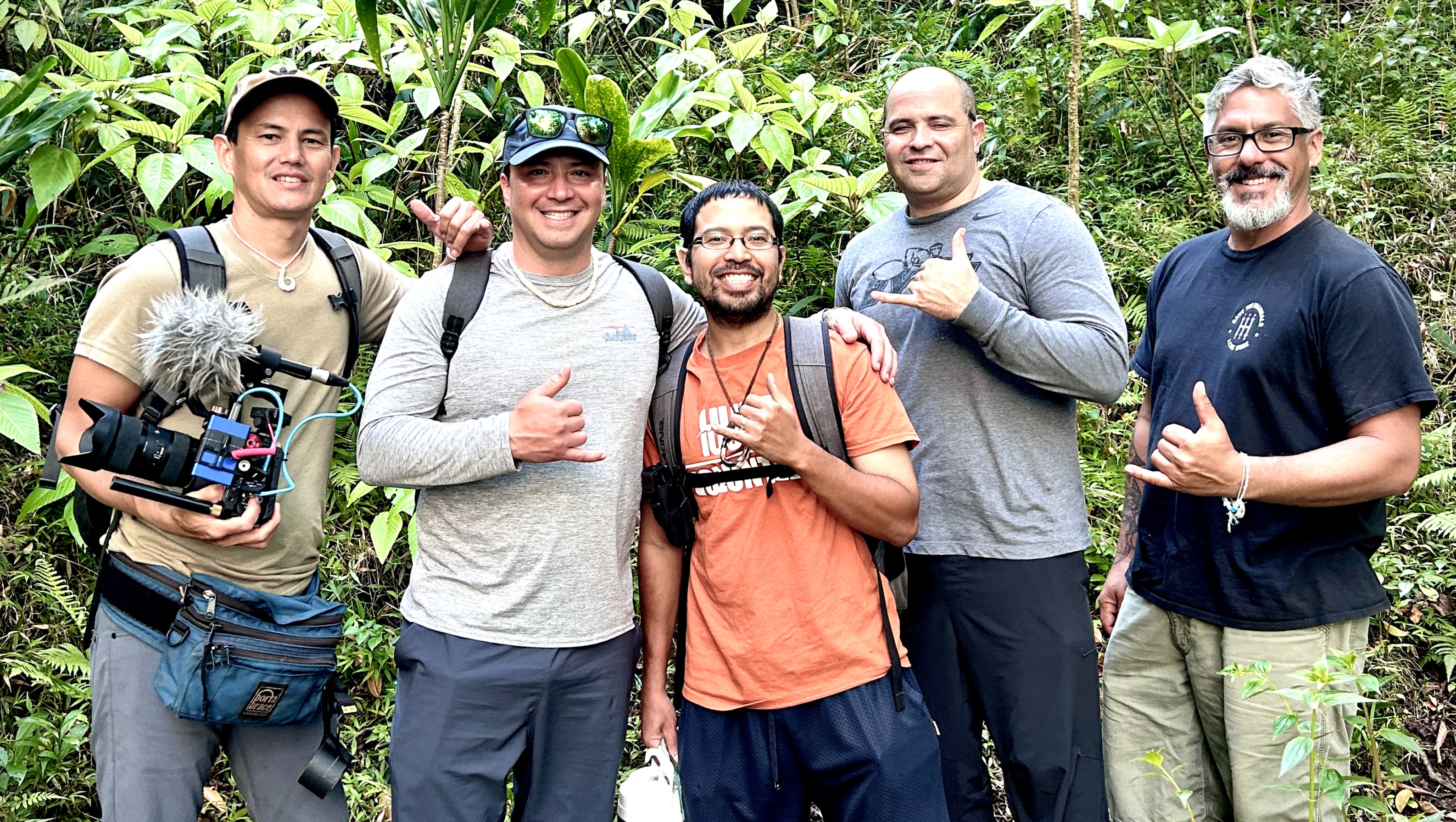
Background:
Today, there are more Kanaka Maoli (Native Hawaiians) living outside of Hawaii than in Hawaii due to displacement and high cost of living, while others have simply followed opportunities that have taken them away from their homeland. Meanwhile, traditional Hawaiian culture fights to survive in a rapidly evolving world while the natural resources and fragile ecosystems of the islands are under constant threat by development and other environmental changes. Sadly, Hawaii is known as the “endangered species capital of the world.”
Olonā (Touchardia latifolia) is a wood shrub endemic to Hawaii that is increasingly rare. Although nearly forgotten today, olonā fiber is the strongest and most durable fiber in the world. So important was the Olonā plant to the Hawaiians that it was grown in small plantations and was the only endemic species and the only non-food plant grown in this manner. The strength of Olonā cordage allowed Hawaiians to advance their technology and arts. Among other things, it allowed for stronger lashings and fishing lines, the fastening of important adze tools, and the weaving of the finest feather capes in all of Oceania.
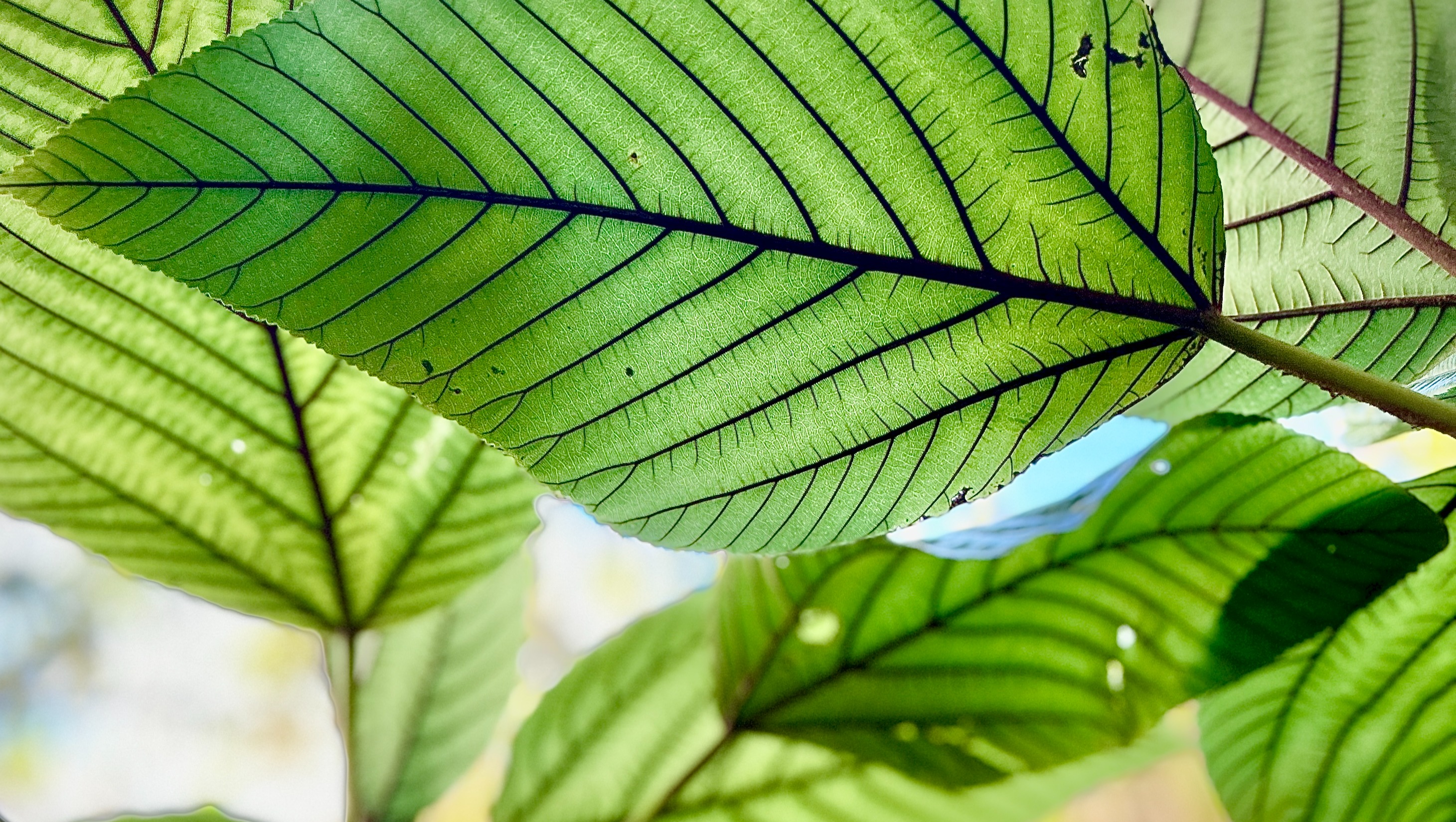
Ulua (Giant Trevally) are fierce apex predators that roam the reefs of the Pacific and beyond. Known for their incredible speed and strength, these fish, which can grow in excess of 150 pounds, are respected game fish pursued only by expert fishers. Once abundant in Hawaiian waters, their numbers have decreased due to environmental pressures. Yet, in remote reef systems, they still roam in schools of hundreds.
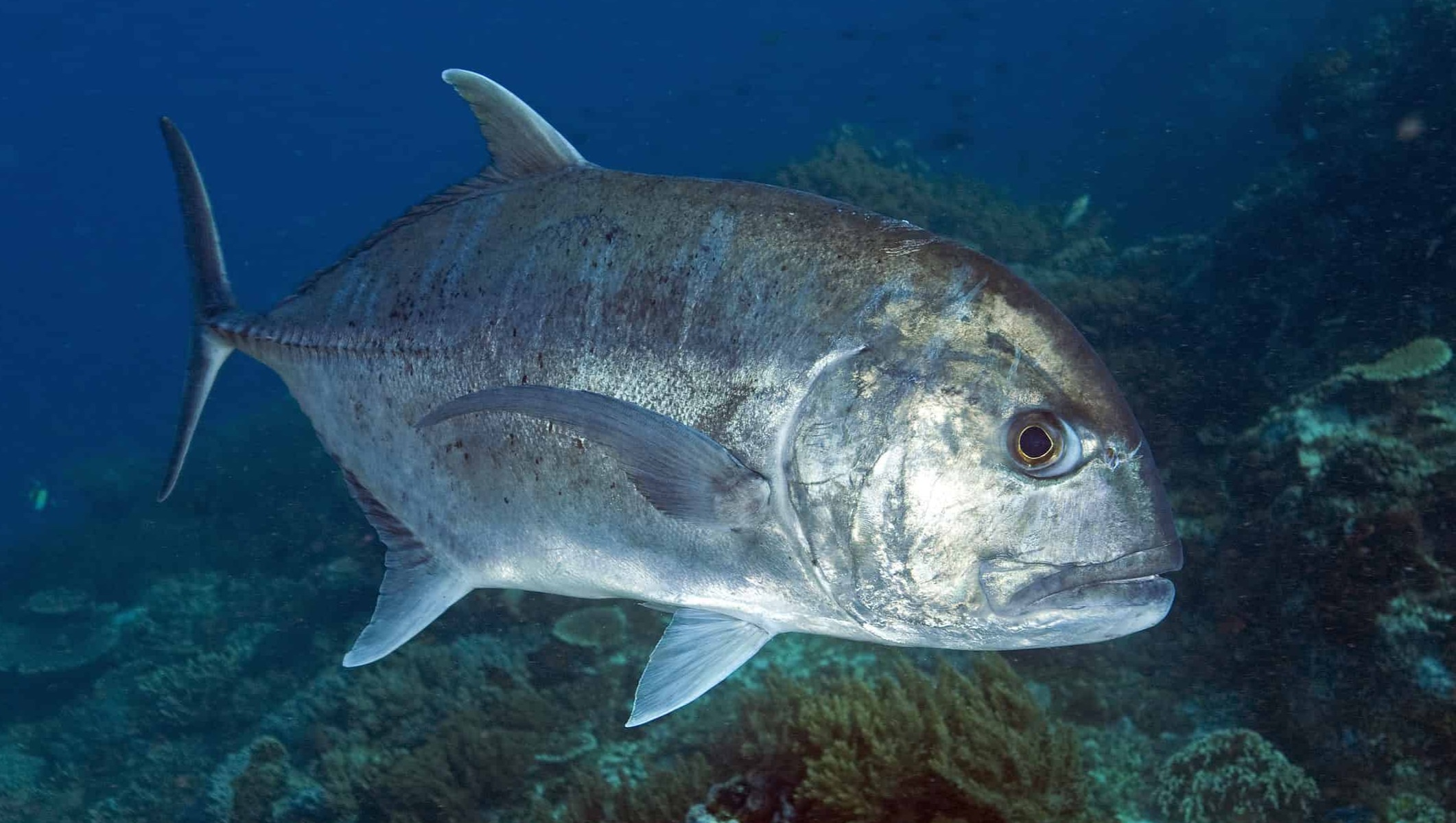
42 year old Keala Kauwe is a podiatrist with a successful medical practice in Billings, Montana. Keala descends from Hawaiian lineage, yet, aside from a few teenage years living on the island of Molokai, he has lived mostly outside of Hawaii, disconnected from his land and culture.
The Story
Keala, an avid fisherman, returns to the island of Molokai for only the second time in 20 years wanting to catch the king of reef fish, the Giant Trevally, known as ulua. But time on Molokai sparks powerful memories of his childhood. He remembers how hard it was being a teenager living on the remote island, but also recalls how he and his brothers developed a deep passion for fishing and a love for the ocean. Returning to the island as an adult, Keala realizes that by staying away for so long, he has lost a piece of his identity.
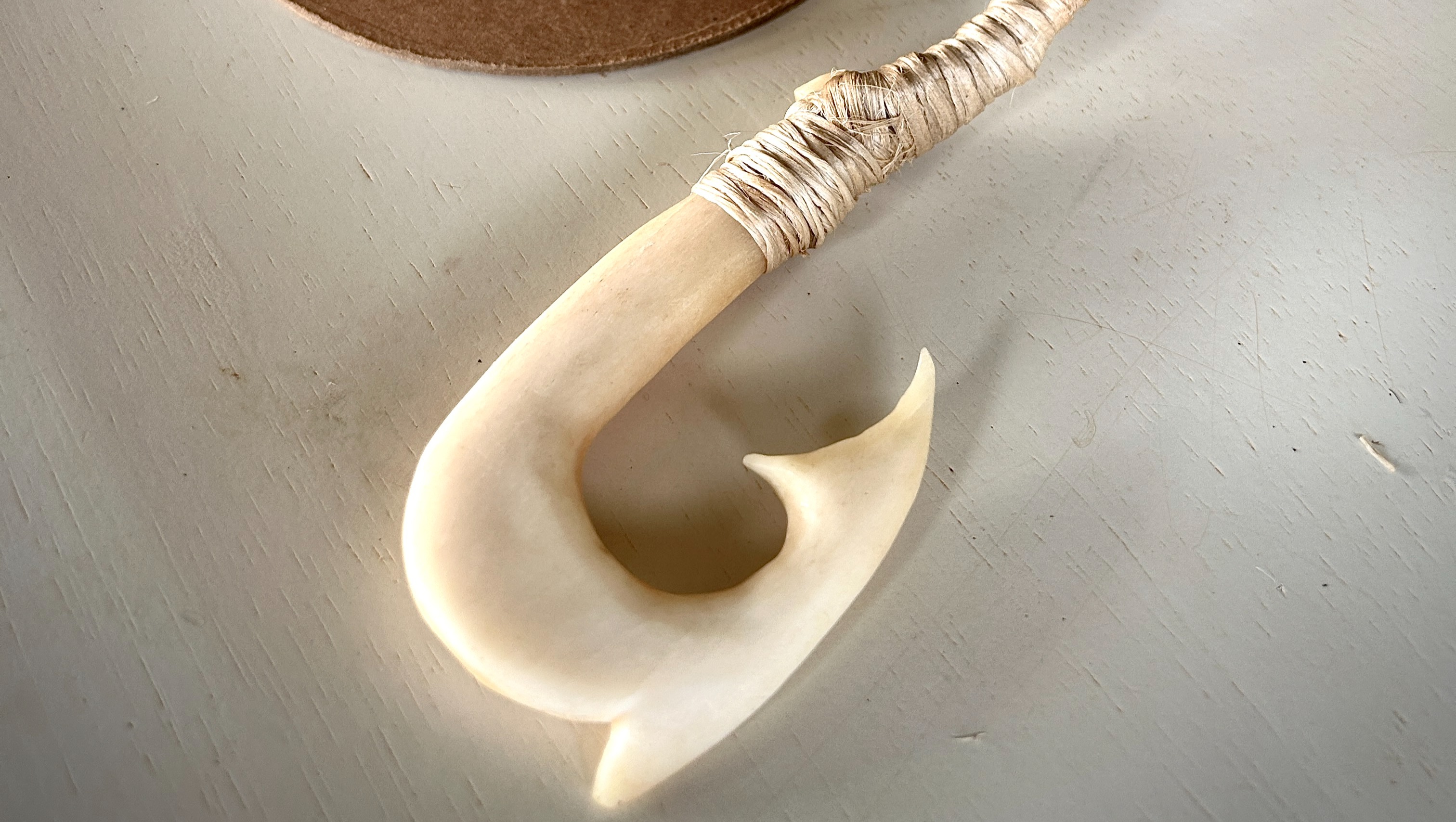
When Keala returns to Montana he begins carving bone hooks, replicating the artifacts of his fishing ancestors. As he researches these ancient hooks he discovers that they were lashed with fishing cordage made from the Olonā plant. Upon further research he learns that Olonā was a very important material for his Hawaiian ancestors. Nearly everything was lashed with Olonā in the old days. All fishing lines and nets of the best quality were made of Olonā because of its incredible strength and high resistance to salt water. It was eventually proven to be the strongest fiber in the world.
Sitting in his workshop in Montana, thousands of miles away from Hawaii, Keala has a vision of using Olonā fishing line with a bone hook to catch an ulua. It is a feat that only the greatest fishermen of old could achieve. Is it possible today? Can Keala make cordage and bone hooks strong enough for the task? Can he find a reef ecosystem healthy enough to hold populations of ulua willing to take his bait?
The idea catapults Keala on a seemingly impossible journey.
In his search to obtain Olonā, Keala learns that the material is nearly impossible to find outside of museums. Eventually, though, he finds one man who is able to cultivate and process Olonā into cordage as it was done in old Hawaii. 75 year old Gary Eoff, an expert craftsman and master artist, is not Native Hawaiian, but was entrusted by Hawaiian practitioners to carry forward this nearly lost practice. Sadly, though, no capable students have stepped forward.
Until now.
Keala begins connecting with Gary via weekly video calls and explains his desire to learn the art of Olonā weaving and hook carving. Like many cultural practitioners, Gary is, at first, hesitant to believe that Keala is sincere in his commitment to learn this nearly lost art. It will require hundreds of hours of practice. Keala needs to prove himself.
In his Montana home, Keala spends many months learning to weave cordage with the more common fibers, starting with rafia. After his technical skill grows he is allowed to begin to use the fiber of the hau tree. Eventually, Gary invites him to visit him in Kona, to finally learn the ways of Olonā.
Keala spends 3 days with Gary. Gary shows him how Olonā is cultivated and processed and how cordage is made. At every stage of learning, Keala feels a deepening connection to his culture and identity as a Hawaiian. He begins to realize that just as the fibers of Olonā are nearly unbreakable, so are the ties to his Hawaiian ancestors.
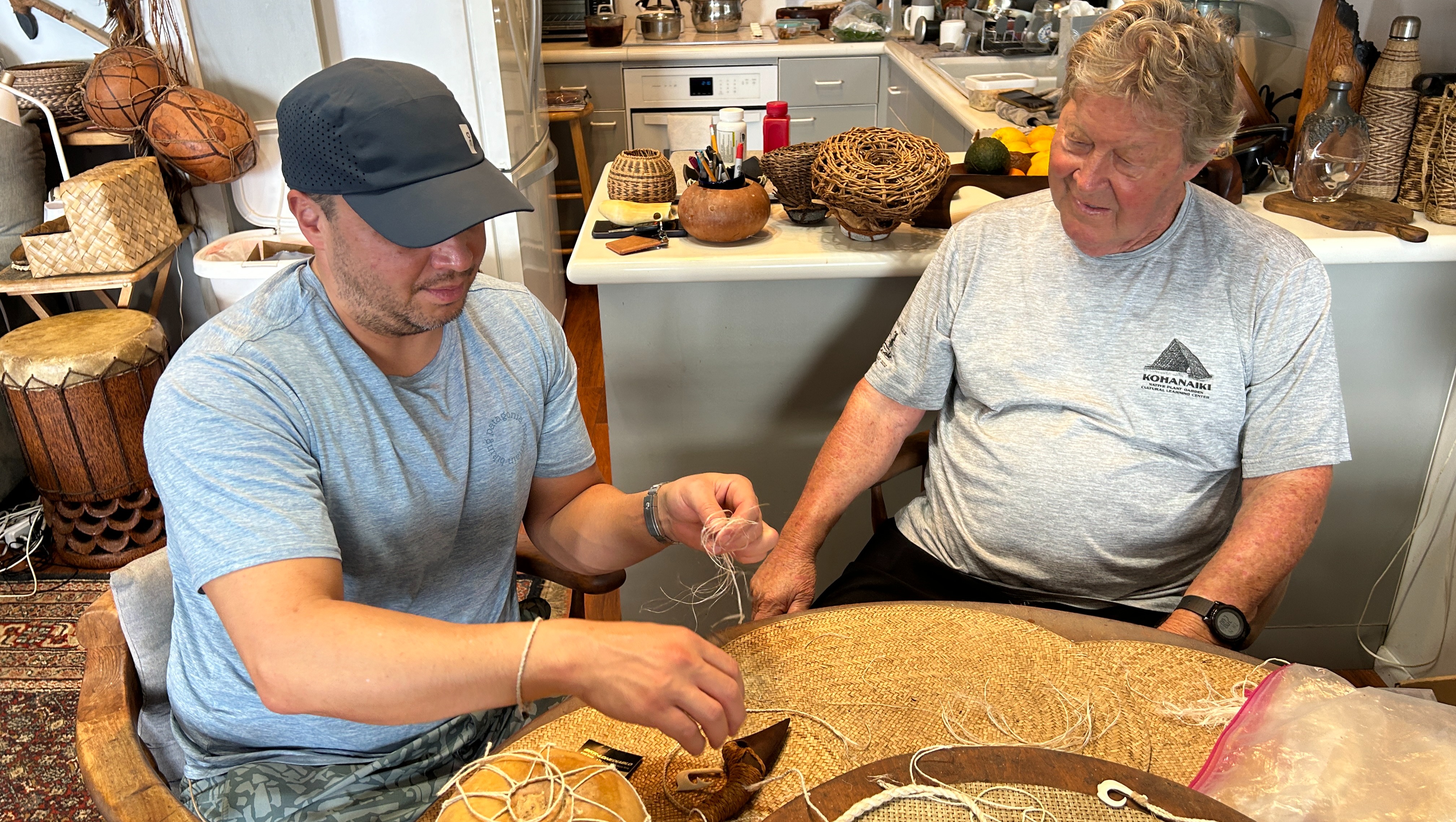
On the same trip, Keala discovers others in Hawaii who are deeply passionate about restoring Olonā and its traditional uses. They help to paint a clearer picture of how important this plant once was and why it has become so rare. They also give hope for the future of the plant as they collectively strive to restore forested areas with Olonā.
Keala also spends time with Hawaiian kupuna (elders) like master fisherman, Mac Poepoe, and master craftsman, Umi Kai. These interactions teach Keala about more than cultural practices, but also how knowledge and culture is passed down from generation to generation in Hawaiian culture.
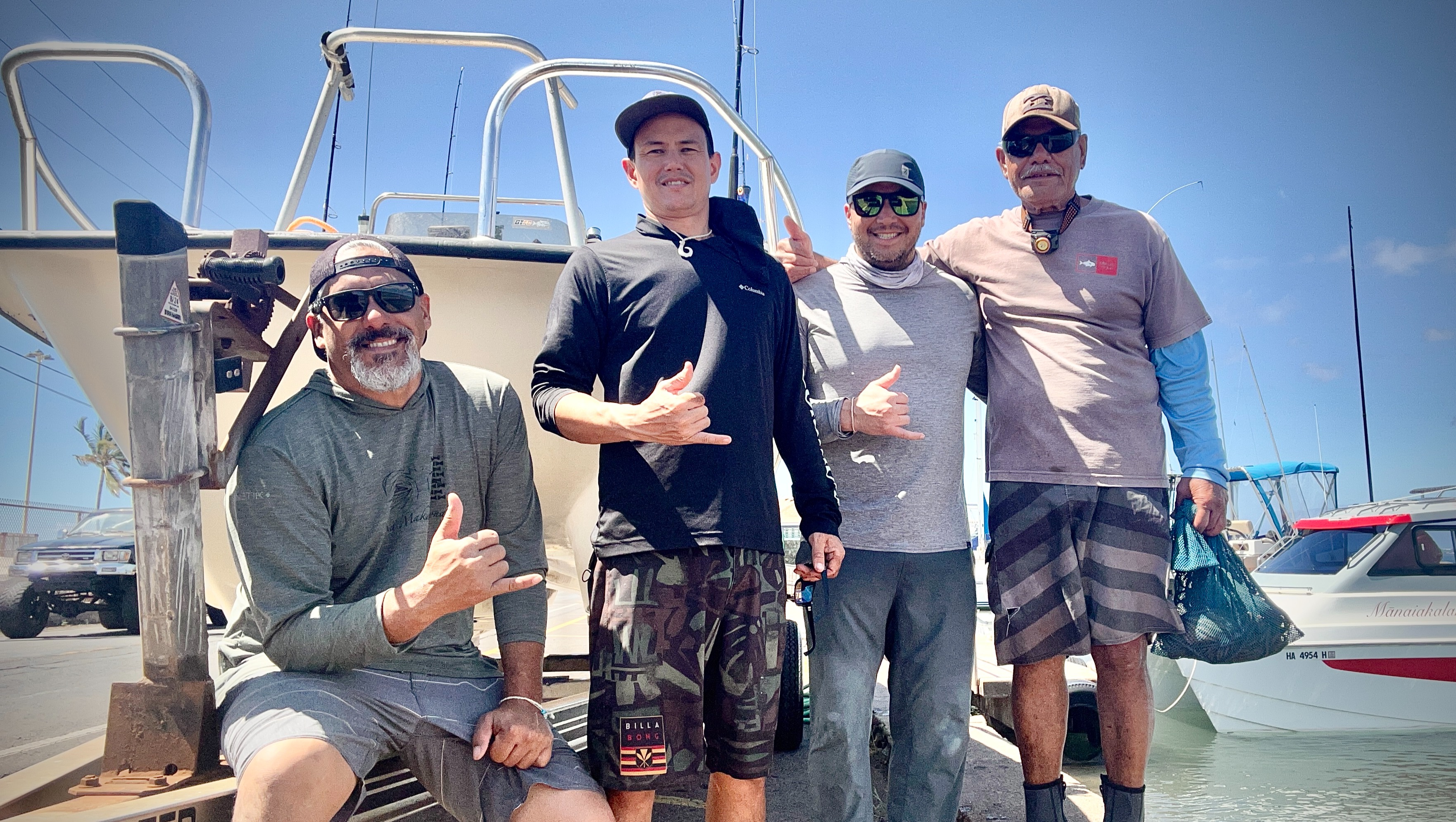
When Keala is unable to catch an ulua on his bone hook in Hawaii he turns to his brother, Keoni, a geneticist who is studying the DNA of the ulua across the Indo-Pacific. Reconnecting with Keoni strengthens family bonds and also leads to plans for a fishing trip to Australia’s Great Barrier Reef, where Keoni needs to collect DNA samples, and where Keala can finally test his bone hooks and Olonā fishing line.
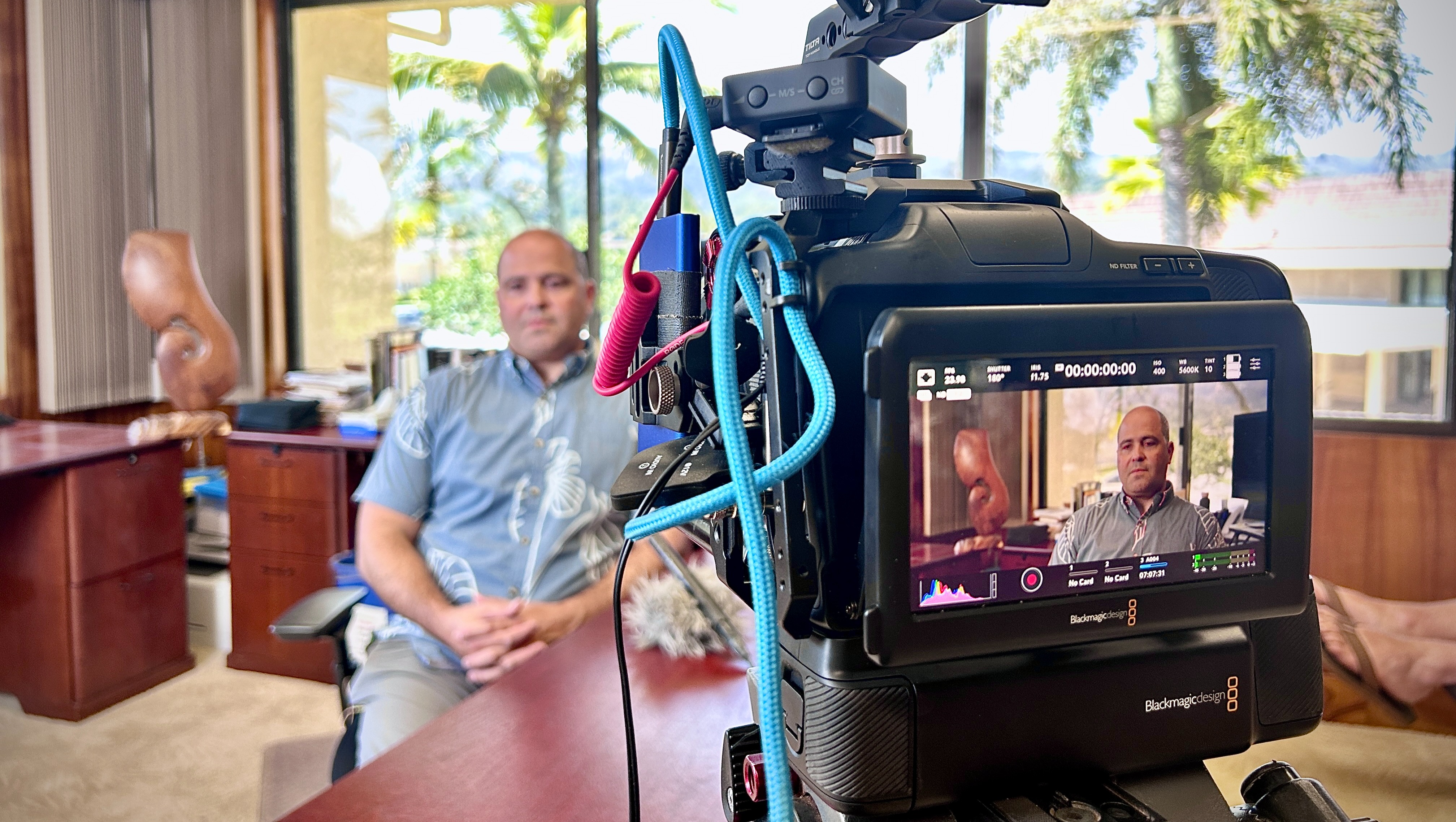
Keala returns to Montana and spends the next 6 months making Olonā fishing line and refined bone hooks in preparation for the trip to the Great Barrier Reef. He tests smaller versions of his line and hooks on trout and bass in Montana and spends hours refining his craft.
Simultaneously, he starts bringing elements of Hawaiian culture into his daily life. Practicing the language, putting up Hawaiian art in his medical office, and being in regular contact with his friends and family in Hawaii. With every inch of cordage that he painstakingly weaves, he finds himself better understanding his identity.
Along this deeply intimate voyage of self-discovery, Keala also gains a much deeper respect and admiration for the ingenuity and brilliance of his ancestors. How were they able to master the elements and nature itself while living sustainably and in complete balance? Indeed they were great scientists, artists, and stewards of nature.
When time comes for the research trip to the Torres Strait, Keala is excited, but also anxious. Will his Olonā fishing line and bone hooks hold up against the schools of aggressive ulua? Can Keala prove himself worthy and make his ancestors and teachers proud?
Goals for the Project:
With your support we aim to complete filming for this documentary by the end of 2024. Editing will take place in early 2025 with the goal of premiering the film in the Summer/Fall of 2025 at select film festivals and community screenings. After film festival screenings we hope to secure distribution/broadcast for the film nationally and internationally.
The deepest intention of this film is to share the beauty and depth of Hawaiian culture and to tell a universal story of identity that includes both cultural heritage and connection to nature and humanity. We also want to highlight the importance of protecting our native ecosystems and natural resources.
Filmmaker Bio
Matt Yamashita is an Emmy Award winning filmmaker from the island of Molokai. Over the past 20+ years, he has produced numerous award-winning documentaries that have seen national and international broadcast. Themes of his work focus on culture, environment, and human connection. For more info, visit his website at:
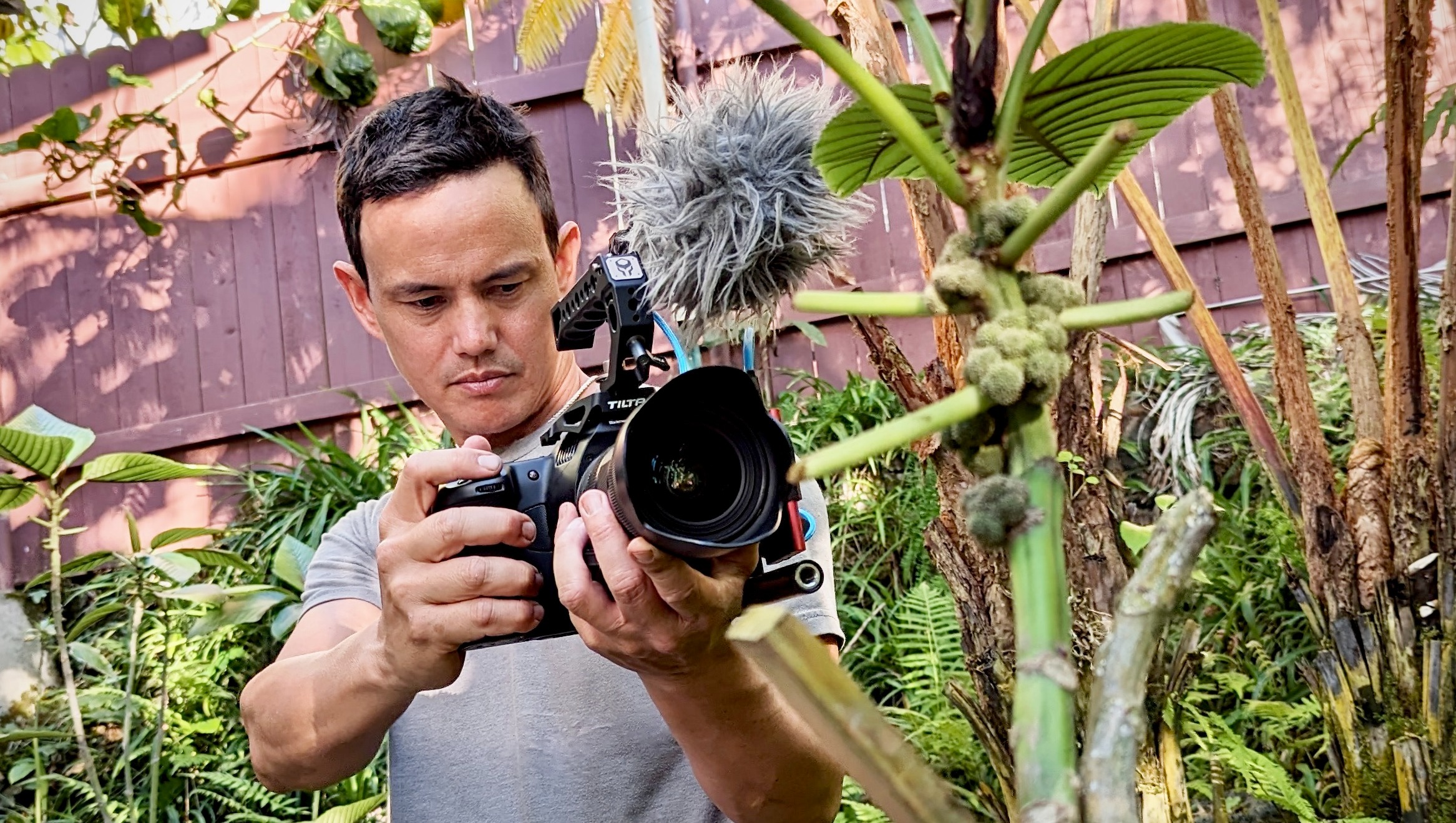
Recognition for Your Support:
Supporters will be given opportunities to view the final film prior to any public screenings with in-depth Q&A with the cast and crew. We will also give anyone who contributes $200 or more the opportunity to have their name listed in the film credits as a proud supporter of the film.
Mahalo nui for joining us on this adventure!
Organizer
Matt Yamashita
Organizer
Kaunakakai, HI